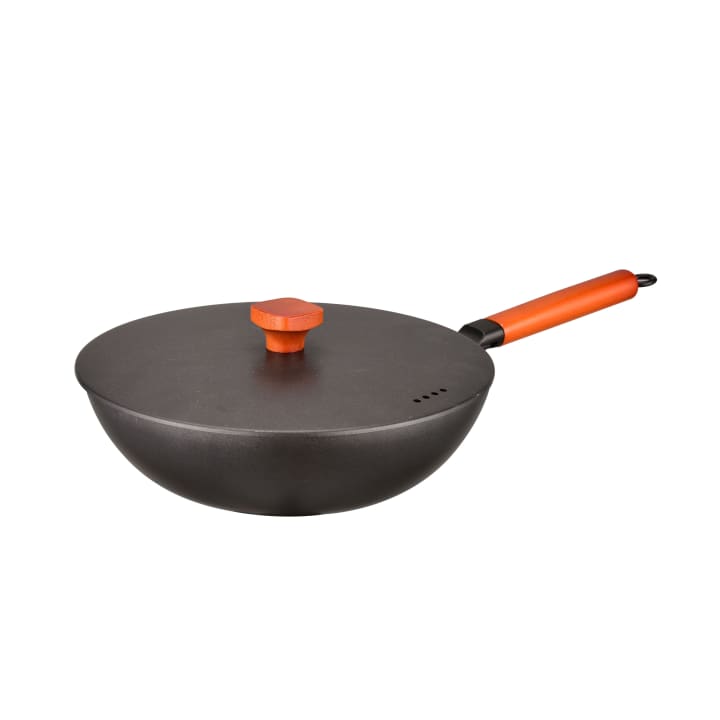Top Nonstick cookware utensils
Nonstick cookware


The usage of metal utensils along with your nonstick cookware is not satisfying for you. Although many stainless steel utensils are durable, sharp metals can scratch and spoil the coating of your nonstick pots and pans. As an outcome, it’ll shorten the lifespan of your cookware set.
Wooden utensils are much better, but they are harder to wash and straightforward. Plus, they’re porous so they just make them an ideal tract for bacteria.
So for this reason, it’s notable that it is really useful to use nonstick kitchen utensils which are made up of silicone or nylon. We can comfortably use them while cooking. Aside from the reality that meals would not stick to the bottom, it will help you to make your dishes taste better and appearance even more presentable and the food will not get a break.
So if you’re equipped to swap your steel or timber cooking kits, here are the fine utensils for your nonstick cookware.
The most secure substances for cooking utensils are:
- stainless steel
- Silicone
- Bamboo
- Wooden

Stainless Utensils
Stainless steel is favorite for 3 reasons, these are:
Protection, sustainability, and sturdiness.
The first thing is stainless steel is hygienic and non-porous. As a result, metal doesn’t gather bacteria on its surface or take out the odors from flavors. By comparing to other sorts of steel, stainless received rust thanks to nickel and chromium. The chromium oxide layer protects the steel and stops corrosion.
Subsequently, chrome steel is sustainable, and in contrast to plastic, we can recycle stainless steel without losing its overall performance. The environment will say thank you! Let talk about sturdiness!
It’s no thriller that stainless steel can manage big abuse
one more thing which is not compensable is sustainability.
Stainless steel utensils can last for a long time. So, you’ll keep money on replacements and reduce pollutants.
Pros
- Hygienic and non-porous surface
- Non-reactive with meals (no altered flavor)
- easy cleansing/ low-upkeep
- long lasting sufficient to closing forever (save money)
- Recyclable
- Dishwasher-secure (store time)
Cons
- Can scratch on non-stick pans
- hot to touch can burn you
- luxurious for manufacturers
Silicone Utensils
Silicone is maybe a rubber polymer created by using combining silicon, carbon, hydrogen, and oxygen. Silicone utensils are gaining steam currently as a state-of-the-art choice. And for accurate reasons, we have a long list of its benefits. First, silicone is flexible, soft, and non-stick. Cleaning of this pan may be a breeze after cooking, and therefore the softness of food in this pan is child-friendly.
Plus, silicone molds the simplest non-scratch utensils that protect your pots and pans because of the soft texture, which is
a notable benefit of stainless steel. Second, unlike plastic, these BPA-free kitchen utensils are inert and stable. Silicone endures heating up to 600℉, right down to -40℉ without leaching chemicals.
Pros
- Made from natural, non-toxic materials
- Soft and versatile (won’t scratch your cookware)
- Non-stick and straightforward cleaning
- Inert during heat exposure
- Stays cool to the touch
- Dishwasher-safe (save time)
- Recyclable
Cons
- Low-quality silicone brands use plastic fillers (no brands on this page!)
- Can stain and hold food odors if not cleaned well
- Although recyclable, not every recycling center deals with silicone.

Bamboo Utensils
I can write a book on all the attractive benefits of bamboo utensils. Except for now, here are the highest three!
First, bamboo is biodegradable and eco-friendly. The bamboo plant is (technically) grass and regrows at breakneck speeds when cut. Certain species grow 36″ inches in just 24 hours! maintains sustainability.
Second, bamboo utensils are sanitary. Bamboo is of course antimicrobial and doesn’t absorb the maximum amount of water as wooden utensils. From this, bamboo warps and cracks but wooden utensils. Plus, these pans are more stain and odor-resistant. But, bamboo still absorbs small amounts of moisture. So, you ought to hand-wash to guard your investment.
Third, bamboo performance! It’s surprisingly sturdy compared to its wood counterpart, although it has a lighter weight. Not as durable as stainless steel, of course, but lighter and easier to take. Plus, bamboo won’t scratch your non-stick cookware or get hot to the touch!
Pros:
• Sustainable and renewable
• All-natural
• Biodegradable (the landfills will thank you)
• Very affordable
• Hygienic and antimicrobial properties
• Lightweight yet very durable
• Stays cool to the touch
• scratch resistant
• Resists moisture (less cracking)
Cons:
• Although durable, bamboo is not as strong as stainless steel and may still break.
• Not dishwasher-safe (dishwasher decreases lifespan).
Wood Utensils
Wooden cooking utensils are durable yet soft enough to guard your cookware to provide your pan non-stick surface. Wood is inert (does not leach), stays cool, and is antimicrobial. But, comparing bamboo spoons vs. wooden spoons, you’ll notice bamboo utensils crush wood in sustainability.
Trees grow back in a slower mode. Bamboo also resists moisture better than wood, helping the tool to stay last longer.
So why include wooden utensils on our list?
Wooden cooking utensils are a proven, time-tested option used for thousands of years. This list is incomplete without wood.
As a kid, I remember my grandmother wielding a wooden spoon to stir her homemade gravy as I awaited dinner (anxiously).
Another point, certain sorts of wood make cooking better than other utensils. Teak wood, for instance, has better resistance to moisture than most wood. Teak is one of the simplest wooden cooking utensils out there. Plus, teak features as unique, classic, and looks there too.
Pros :
• Biodegradable
• All-natural
• Renewable (although slower than bamboo)
• Hygienic and antimicrobial properties
• Very durable
• Stays cool to the touch
• Won’t scratch pans
Cons:
• Porous surface (absorbs water)
• Not dishwasher-safe
• Can stain (mostly with tomato sauce)
You can see here that stainless steel, silicone, bamboo, and wooden cooking utensils are the healthiest options for the safer cooking of food. All of these have benefits and limitations, so having a mixture of all four is ideal!
Next, let’s glance at the seven safest cooking utensils!
THINGS to keep in mind are:
- Keep in mind that what your needs are. Selecting the proper utensils san to assist you to create the simplest dishes.
- Budget should be kept in mind always. Set a budget and never compromise on quality. In terms of kitchen tools, you should always not compromise. So buying cheap may simply cost you more at the end of the day.
- Material is not a thing to compromise. Nylon and silicone are the foremost popular utensil materials for nonstick cookware. They’re hygienic, scratch-resistant, dishwasher safe, and sturdy. Nonetheless, confirm to settle on people who suit FDA standards.

BENEFITS OF USING the simplest UTENSILS FOR NONSTICK COOKWARE
• Safe cooking. These utensils don’t emit toxic fumes during the cooking process. This ensures that your food remains healthy.
• Easy cleaning. Food would not stick on the surface of those kitchen accessories, and they’re usually dishwasher safe.
• Stylish. They will give your kitchen a trendy and modern touch, which may make it look even more appealing. They are also more presentable.
WHAT'S THE RIGHT thing to CLEAN MY UTENSILS?
Not all detergent may go well with the surface of your nonstick kitchen utensils. Additionally, you will harm your kitchenware if the temperature of the water you’re using for cleansing is high. For this reason, it’s best to scrub your utensils by hand with normal water rather than in your dishwasher to stop damaging them.
FINAL THOUGHTS
Opting for the simplest utensils for nonstick cookware allows you to enjoy preparing your meals even more. They’re also free from harmful chemicals, ensuring your food stays healthy all the time.






Comments
There are no comments for this story
Be the first to respond and start the conversation.